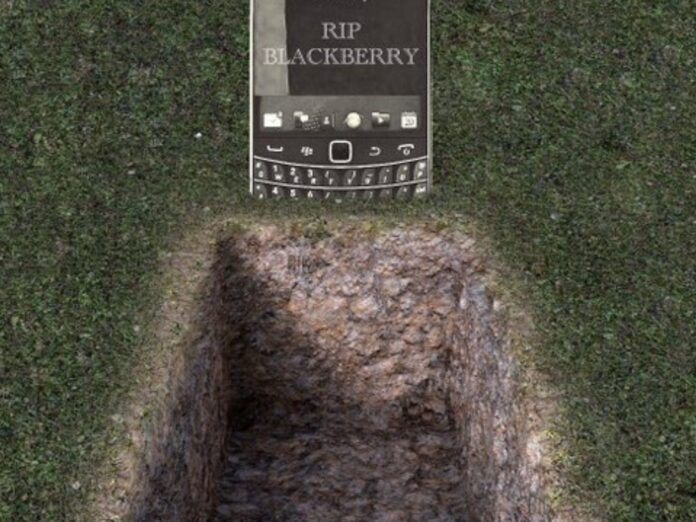Washington Watch
At the end of February, my BlackBerry Curve died. It didn’t actually die, but it might as well be dead, because my BlackBerry only operates on 3G and my phone provider has ended 3G service. As a result, my device turns on and I can still type on it, but because it can’t connect, what I type can’t be sent anywhere.
For years my family and friends warned me that this day would come, but I ignored them because I simply couldn’t imagine life without my Curve. Without exaggeration, it had become a part of my life. For the last 13 years, I had spent the better part of each day typing on it. I wrote drafts of my last two books on my BlackBerry. On most afternoons you could find me either in Lafayette Park or seated at my favorite Washington restaurant hunched over my little friend clicking away either on my weekly column, a polling report, or a briefing memo for my office. There’s even a rather large oil painting hanging in the Davidson College library of me sitting on the steps of the college’s guest house writing my weekly column.
As of last month, I’ve been writing my weekly column for 30 years. Because I had never learned to use a typewriter, and using the computer keyboard felt awkward and uncomfortable, for the first 17 years, I hand wrote my weekly pieces and passed them on to my assistant who deciphered my scratching, typed them up, and sent them out. Because I was writing all the time, I had developed preferences that made my writing easier. The legal pads couldn’t have too smooth a surface and the lead in the pencils couldn’t be too soft or too hard.
Back then, I had been using a BlackBerry for emails for a few years and had become adept at it. Then one Friday, I found myself in a Chicago airport, flights home had been cancelled because of bad weather and my column was not yet finished. Because there wasn’t a fax machine available at the airport, I had no way to send my hand-written piece to my office. I, therefore, translated my own near-indecipherable writing to my BlackBerry and emailed it to my office. My assistant sarcastically wrote back “Welcome to the 21st century!”
I was hooked and never looked back. Over the years, I got better working on my little Curve. By the end, I was doing an 800-word piece in just about an hour. I had become so addicted to my BlackBerry that when the company announced that they would no longer be manufacturing the Curve, my office ordered 4 back-up devices.
When AT&T announced that it was phasing out 3G and that BlackBerrys would no longer operate – I didn’t want to believe it and so ignored the warnings until that fateful day when the system completely died.
But life does go on. I’m typing this piece on my iPhone. It’s my second column on this device – a bit awkward, but after more than a decade on the Curve, my thumbs do know where to go. I miss the feel of the keys and the handy working of the cursor, but I’m doing it and feeling almost fully a part of the second decade of the 21st century.
This issue of how changes in technology have impacted our work has intrigued me since the mid-2000s when I was at Dartmouth College delivering their “Rockefeller Lecture.” After I spoke, a professor approached asking if I would speak to his class the next morning. When I arrived, I discovered that it was a course on social organization and the question he posed to me was “I notice from your biography that the past three decades you’ve founded and run a number of policy organizations. How have changes in technology impacted your work?”
My brain exploded as I thought back to how, from the time we began the Palestine Human Rights Campaign in the mid-1970s until now, we had shifted from manual typewriters and mimeograph machines to computers and mass emails. And then came mobile phones and then the BlackBerry- which my wife, Eileen, called “your office in your pocket” – meaning that, to her dismay, our vacations could be interrupted at any time for work, overseas calls, or media interviews. Printed newsletters gave way to websites and then to multiple social media platforms.
I began writing my weekly column in 1992 and was fortunate that it was picked up by newspapers in several Arab countries. I’ve described how I wrote my columns, but more important to the matter under discussion was how we sent it to partner papers. Using the fax machine, which was still in its early stages of development, we faxed it to each one – a process which took hours to complete. Now we email – an instantaneous transfer of information to multiple addresses with a single click.
Changing technology has clearly made communication easier, but the results are mixed. Back in the 1970s when we sent out a fundraising mailing to 3,000 recipients, that blurry mimeographed solicitation would generate 600 responses. Today, an email to 30,000 will likely not do as well. Receiving a letter in the mail was a rarity back then and so it was opened and read. Now, with too many emails, most are never even opened. Newsletters were devoured, now we struggle to find ways to draw supporters to our websites and platforms.
But it is the world in which we live and to which we must adapt. That’s why I’m typing this on my iPhone and then will send it off for editing and formatting to my computer and then to my newspaper. I’m going to miss my BlackBerry, just as I missed my legal pads and pencils. But I’ll keep writing as long as I can, have a newspaper that will carry my work, and have readers who care to read my musings.























